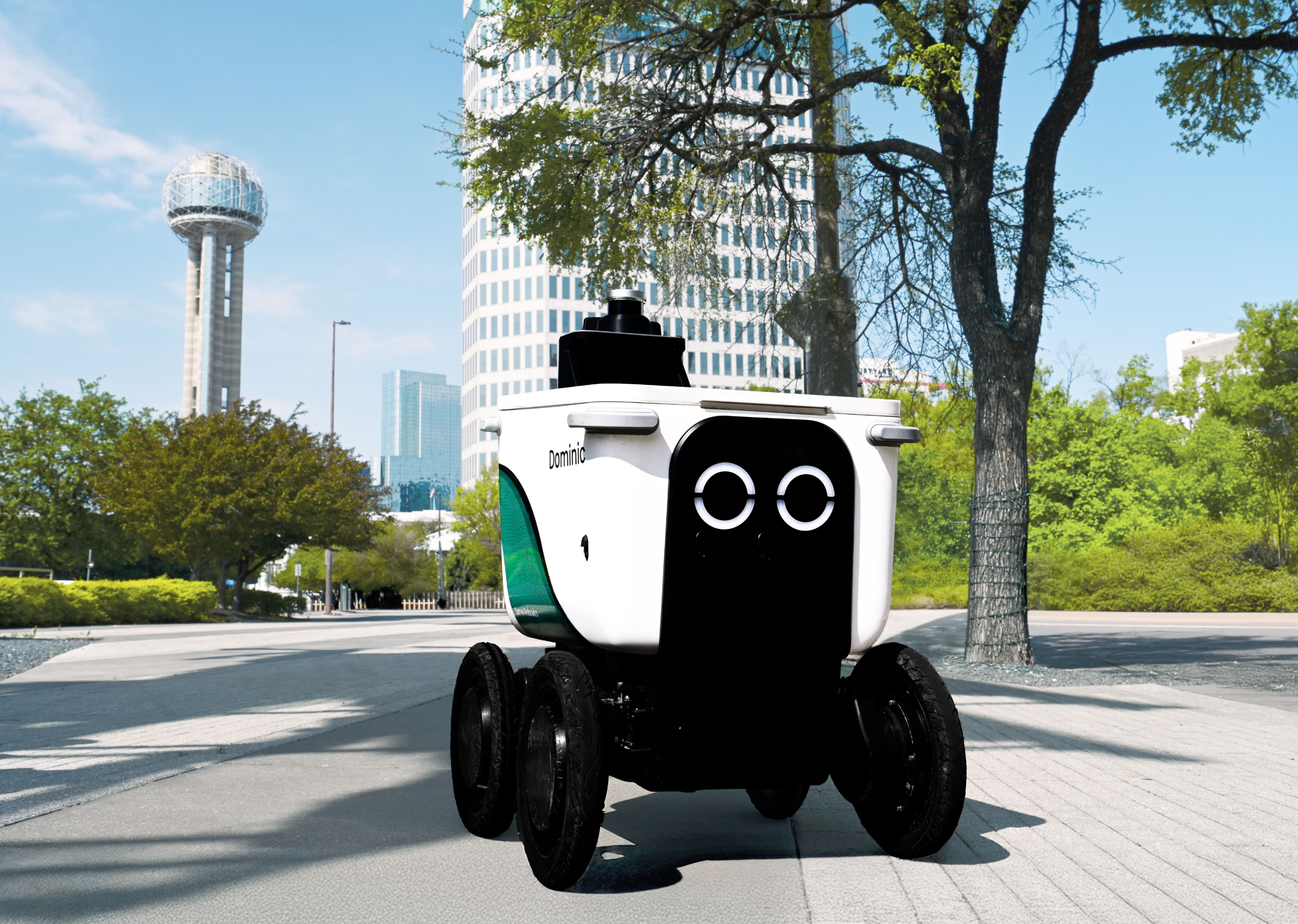
Courtesy of Serve Robotics

Audio By Carbonatix
“Why move two-pound burritos in two-ton cars?” asks Dr. Ali Kashani, CEO of Serve Robotics, which recently launched in Dallas.
The question is a driving force behind California-based Serve Robotics. Through a partnership with Uber Eats, Serve’s robots, which look like large coolers on wheels, are rolling out meals for delivery in Uptown. Customers can’t exactly request a robot, but there’s a chance it’ll be picked up by one if the delivery address is within a certain distance.
“You could opt out if you don’t like robots, which is very rare,” Kashani says. “People usually like robots a lot.”
Serve’s robots were let loose into Uptown last week, making deliveries for Shake Shack and Ka Thai. These ‘bots come just months after Austin-based Avride launched a similar service in downtown Dallas, making deliveries from Bread Zeppelin and Salsa Limón. We tried it for ourselves back in December and were pleasantly surprised by the results. Also operating through Uber Eats, the robot arrived from Salsa Limón about 20 minutes after we ordered, successfully navigating intersections and pedestrians along the way.
This year, make your gift count –
Invest in local news that matters.
Our work is funded by readers like you who make voluntary gifts because they value our work and want to see it continue. Make a contribution today to help us reach our $30,000 goal!
How It Works
When a delivery is placed through Uber Eats at either Ka Thai or Shake Shack, a robot (with its name printed on the side, like Dominic or Otto) arrives at the restaurant’s front door. A restaurant worker receives a notification on an expo tablet and then places the order inside the robot.
Ashani estimates that the robots can carry about the size and weight of six large pizza boxes. Deliveries are made up to a mile and a half from the restaurant, with LiDAR (light detection and ranging) sensors enabling the robot to navigate its surroundings.
“They can see better than humans,” Kashani says. “They can see 360 and with sensors like LiDAR that actually see the world in three dimensions in any lighting condition or weather condition. So technology has come a really long way.”
With all of that expensive tech, plus the meal inside, it seems like the Serve robots would be a prime target for theft, but Kashani says that they haven’t encountered any incidents so far.
“I get asked these questions [about theft] more often than it happens,” Kashani says.
Kashani also cites the dangers that regular pedestrians face in high-traffic areas with cars. In 2022, the Insurance Institute for Highway Safety counted 7,522 pedestrian deaths in motor vehicle crashes. If Serve’s robots mean fewer drivers on the road, he sees it as a benefit to public safety.
So far, Serve is only delivering to select neighborhoods in Uptown (Pearl, State Thomas, West Village, and South Routh) and can reach about 22,000 homes in that area.
Another benefit for consumers is that Serve robots don’t expect tips, which helps drive down the cost of delivery.
Serve is also planning to debut drone deliveries in the near future through a partnership with Wing, a subsidiary of Alphabet, which owns Google. If all goes to plan, deliveries beyond the robot’s mile-and-a-half capacity could be transported in the air; in some situations, the robot could pass off food to a drone without human involvement.
“For drones, that’s more challenging to get to reach the restaurant,” Kashani says. “They usually need dedicated real estate. They can have noise. There are other safety concerns. Our robots can get to any restaurant without any infrastructure change.”